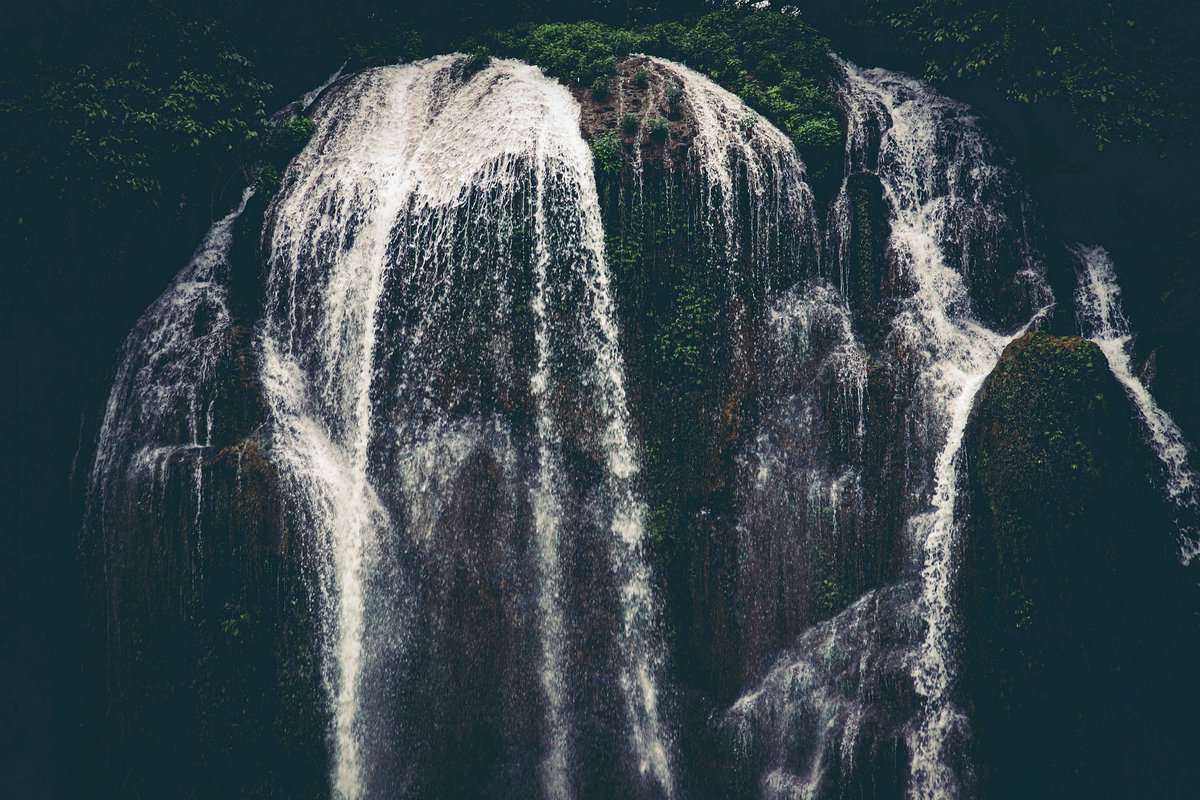Water is the element of mystery.
Nearly all the cultures in the world expressed their veneration of water through various rituals and mythological tales.
The dawn of nearly every great civilization began around a river.
Euphrates, Danube and Ganges are only three of many renowned rivers in human history.
This element’s mystery relates to the spiritual and physical spheres of our existence.
Physically, we are aware of how little we know of oceans. And everyone has even a shade of rational fear of water.
Water is the primary sustainer of life and a hazard at once.
Spiritual Reverence of Water

Water is an integral part of many ritualistic practices.
The most obvious one in our day is baptism.
Whether a person is sprinkled or outright submerged in water, this speaks of the element’s transformative and cleansing power.
Since the dawn of time, water has been used in fertility and purifying rituals. It’s the main part of any healing practice.
Also, water is an integral part of various funeral rites.
Water and the Underworld

Ancient humans made this connection for various logical reasons.
First and foremost, water comes out from the depths of the earth. They had no scientific way to explain that natural occurrence.
However, they did know that was the same place where their dead resided.
Water Is a Vessel of Transformation
Underwater is a whole new world to us humans.
It’s a world in which we can’t breathe, we can’t talk or even move the way we usually move.
If you believe in the Underworld, it’s easy to see why rivers, lakes and seas were considered to be portals between it and the world of the living.
From water, we emerge wet and cold, but also clean and refreshed.
We Travel Across Water – In This Life and the Next
Scandinavians, as groups of people who live close to the sea, developed a strong connection to water.
They made revolutionary boats for their time. Vikings depended on the sea to be able to pillage and trade.
And much like in life, in death, they also turned to the sea.
You might have read about their funeral rites, or seen them in a movie.
The deceased is placed inside a boat with their most prized possessions and sent out for the waves to take them away.
This same rite was similarly practiced by Slavs and many other ancient peoples.
The Rivers of the Underworld

Rivers of the dead are known to us from various mythologies.
Many of us had learned about the river Abydos from Egyptian mythology. It is believed to separate the world of the living from the dead.
The aforementioned Ganges river from Hindu mythology is also popularly known.
It’s believed to have truly originated in the underworld and to have the power to purify and heal.
However, the best-known rivers of the afterlife are those from Greek mythology.
They’re the five rivers of Hades.
The Way to Hades

Life isn’t easy, so our ancestors collectively concluded that the afterlife isn’t either.
Like any other rite of passage, it took agency and worthiness to pass from one life to the next.
The deceased aren’t only entering the world of the dead, they’re gaining the opportunity for rebirth!
That is why the most vicious sin and punishment we can read about in Greek myths relates to the desecration of the dead.
It’s quite literally banishment from the afterlife.
On top of all this, the newcomer to Tartarus has to pay the ferryman Charon for the ride across the five rivers.
Without payment, they’d be doomed to roam the underworld forever.
This is why in some cultures, the dead are sent away with coins over their eyes.
The Five Rivers of Hades

1. Acheron
2. Styx
3. Lethe
4. Phlegeton
5. Cocytus
Acheron: The Border Between the Worlds

Popular culture had somehow mixed up the rivers Acheron and Styx.
Acheron is the first river in Tartarus. Perhaps Styx has a stronger-sounding name, so it’s easier to remember.
Acheron is the primary river of the Underworld and by far the most important. It prevents the living from entering Hades and the dead from coming out.
Along the shores of this river is where we could meet Charon, the ferryman, as well as Cerberus.
Cerberus is the renowned triple-headed guard dog of Hades.
Acheron is the River of Woe because it’s where the sinners are punished. Those who have done wrong would feel terrible pain while crossing Acheron.
It’s even suggested that those who have committed terrible crimes are doomed to roam Acheron forever.
Styx: The River of Hate

Styx is the most famous of the five rivers.
It’s said to be enormous so it encircles the entire Underworld seven or even nine times.
Styx in literal translation means shudder. This refers to the deep hatred we have for death.
This also connects it to the goddess it’s associated with – Styx, the goddess of hate and one of the Oceanids.
It’s also called The Black River.
This is the part of the journey into the afterlife that is arguably the hardest. The traveling souls still haven’t accepted that their worldly life is over and are frightened.
Many artworks depict this journey and usually show terrified and unhappy people headed for Hades.
Lethe: The River of Oblivion

Lethe is where the journey into the afterlife becomes somewhat easier. For a little while.
This river passes by the cave of Hypnos, and it’s connected to many other mythological creatures.
Lethe’s flow is controlled by the night goddess Nyx, and the river itself was named after the minor goddess Lethe.
She was the personification of forgetfulness.
This is where the souls begin to prepare for reincarnation.
By drinking from the river they would gradually lose memories of their past life.
Lethe became increasingly important as the ancient Greeks began to focus more on the idea of rebirth.
The water heals any injuries they might have gotten in life. It’s also said to sustain them so they can continue on with their journey.
Phlegeton: The River of Fire

Phlegeton is the place that best resembles the popular idea of hell.
It’s referenced in many Western artworks, most prominently in Dante’s Inferno. He describes it as a river of burning sulfur and brimstone.
However, the River of Fire is described in various ways. It’s said to flow as molten lava, boiling water or simply to be a sea of pure fire.
Phlegeton is the place of punishment for the worst sinners, which include murderers, traitors and alike.
Giant scorpions and snakes can be found there.
The river got its name from the Potamoi named Phlegeton. Potamois were the sons of the Ocean and the river gods in Greek mythology.
Cocytus: The River of Grief

This river is said to be located to the farthest west of Hades.
It is surrounded by a line of trees that are constantly weeping. Its flow is made of the tears of the punished souls.
It flows slowly, lethargically and symbolizes the sorrow of those who are being tormented.
Some sources suggest Cocytus to actually be a swamp rather than a river.
Many renowned characters from the Greek myths are said to be punished in this very river. The gods themselves made sure to send them to be punished there.
Tantalus, Sisyphus and Ixion are only some of them.
Cocytus is said to be a reflection of humanity’s fate to always face the consequences of our actions.
A little Aquarius, devoted to writing and embroidery. Through my writing, I hope to empower readers to align with their true selves and navigate life’s mysteries with confidence.

